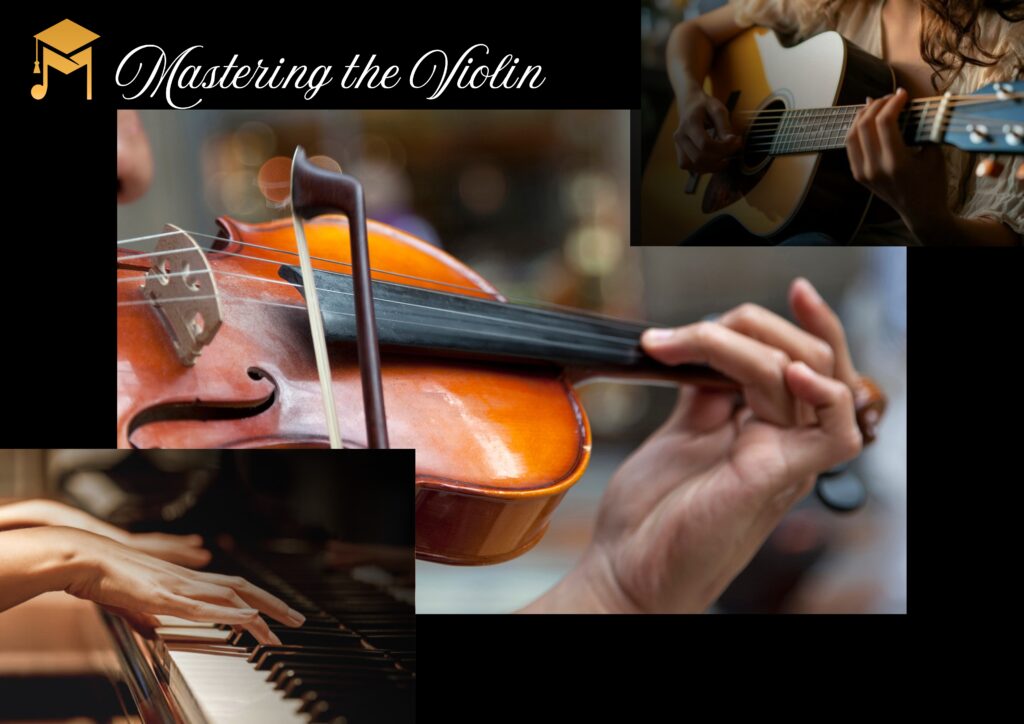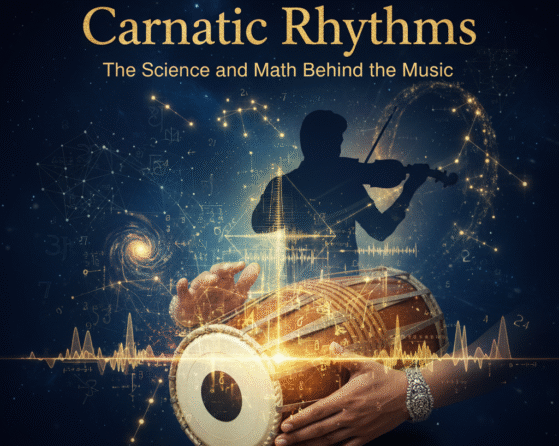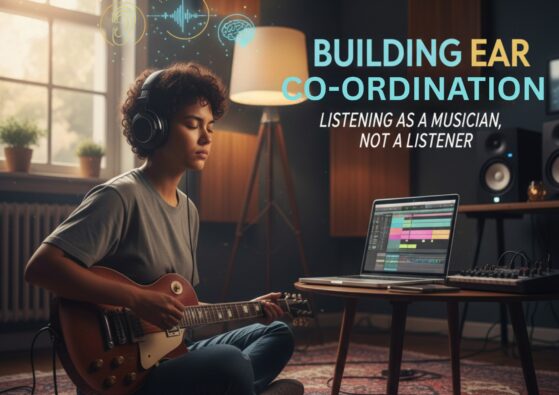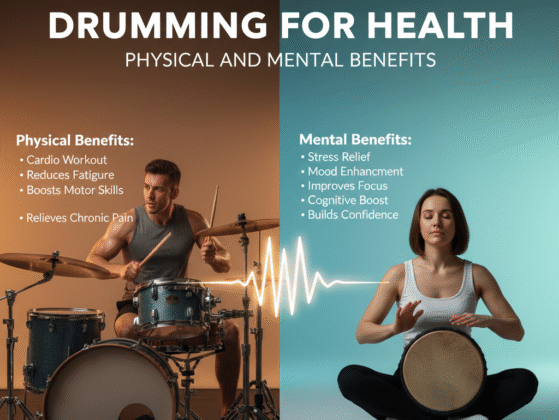Mastering the Violin | Start with Guitar or Keyboard
The violin, often revered for its elegant form and expressive sound, stands as one of the most challenging instruments to master. Its intricate techniques and delicate balance demand not just skill but a deep understanding of musical nuances. For those who are drawn to the violin’s siren call but lack prior experience, diving straight into this complex instrument might prove daunting. Instead, starting with instruments like the guitar or keyboard can lay a solid musical foundation, making the journey to mastering the violin more rewarding.
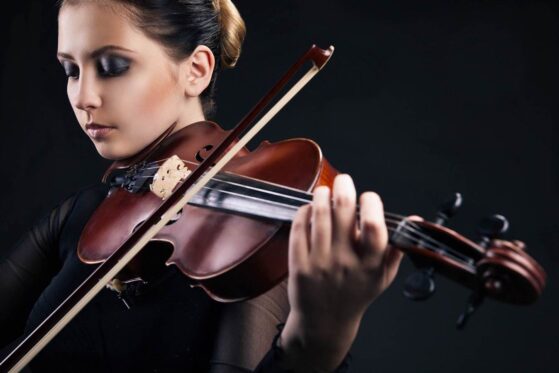
The Intricacies of the Violin
The violin’s difficulty arises from several factors:
Physical Demands: Unlike many other instruments, the violin requires precise finger placement and bowing technique. The player must master the art of holding the violin and bow correctly while simultaneously managing intricate finger movements on a fingerboard that lacks frets.
Ear Training: The violin produces sound through string vibration, and the player must develop an acute sense of pitch to achieve accurate intonation. Unlike fretted instruments, the violin’s fingerboard requires players to find the exact pitch by ear, which demands significant practice and skill.
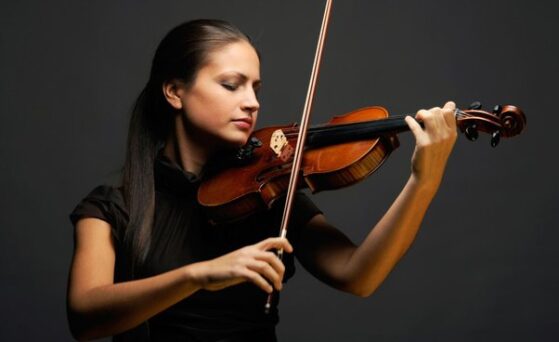
Bow Technique: Controlling the bow’s pressure, angle, and speed is crucial for producing a clean, expressive sound. This technique is complex and requires coordination between the bow hand and the fingers of the left hand.
Complex Repertoire: The violin repertoire ranges from classical masterpieces to contemporary pieces, each with its own technical demands. Mastery of the violin often involves years of practice and exposure to various styles and techniques.
The Case for Guitar and Keyboard as Starting Points
Guitar:
Finger Placement and Intonation: Unlike the violin, the guitar’s frets help guide finger placement, making it easier to produce the correct notes. This can be a great way to develop a basic understanding of musical intervals and scales.
Strumming and Picking Techniques: Guitarists learn to strum and pick with varying techniques, which can enhance hand coordination and rhythm. These skills are transferable to the violin’s bowing techniques.
Musical Sense: Playing the guitar helps build a sense of musical timing, chord progressions, and melodic structure, which are essential for understanding more complex instruments like the violin.
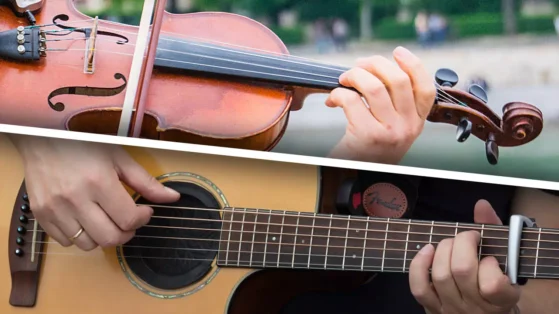
Keyboard:
Visual Layout: The keyboard’s layout provides a clear visual representation of musical scales and intervals, making it easier to understand music theory. This clarity can help develop a better sense of pitch and harmony, beneficial for violin playing.
Finger Dexterity: Keyboard playing involves using both hands independently, which enhances finger agility and coordination. This skill is crucial for the complex finger movements required on the violin.
Rhythm and Timing: Playing the keyboard helps develop a strong sense of rhythm and timing, which are fundamental for mastering the violin’s bowing patterns and overall musical phrasing.
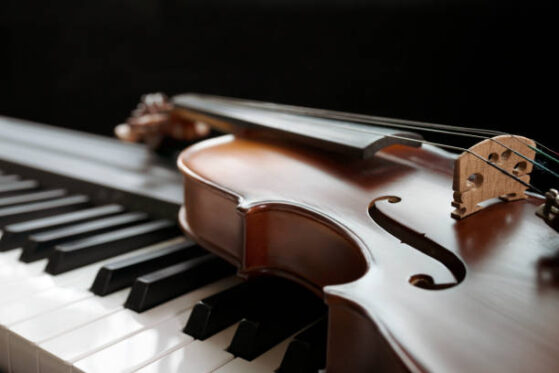
Transitioning to the Violin
Once you’ve gained proficiency on the guitar or keyboard, transitioning to the violin can be a smoother process. Here’s how:
Musical Understanding: A solid grasp of music theory and ear training from your previous instrument will make it easier to focus on the technical aspects of the violin.
Improved Coordination: The hand-eye coordination and finger dexterity developed on the guitar or keyboard will aid in mastering the violin’s complex finger placements and bowing techniques.
Enhanced Musical Sensitivity: Your improved sense of rhythm, pitch, and musical expression will translate into a more nuanced and expressive violin performance.
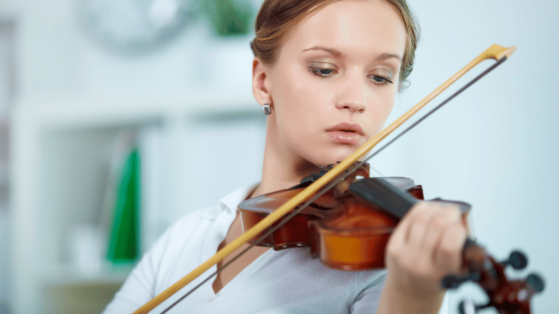
Developing Musical Sense
Both the guitar and keyboard help develop essential skills such as:
Understanding Rhythm and Timing: Playing in time is crucial for any musician. Both the guitar and keyboard allow beginners to practice playing with a metronome or along with recordings, which helps internalize a sense of rhythm.
Learning Music Theory: The layout of the keyboard, in particular, is closely aligned with music theory concepts. As beginners learn scales, chords, and progressions on the keyboard, they develop a deeper understanding of musical structure that will benefit them if they decide to transition to the violin later.
Building Finger Dexterity: Both instruments require finger movement and coordination, which is vital for playing the violin. Developing these skills on a more forgiving instrument can make the transition to the violin smoother.
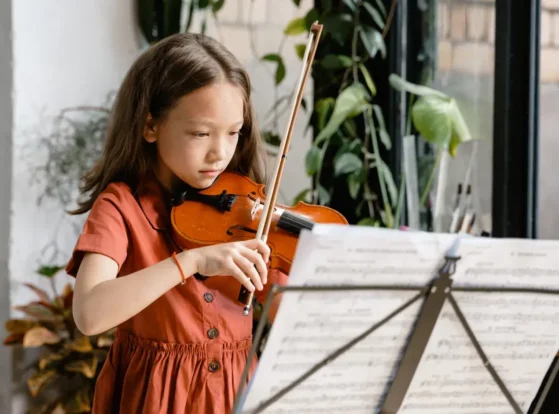
Conclusion
The violin is a beautiful but challenging instrument that demands a high level of skill and dedication. For those who are eager to start with the violin immediately, it’s worth considering beginning with a more accessible instrument like the guitar or keyboard. These instruments can help you build a strong musical foundation, making your eventual journey to mastering the violin not just possible but profoundly rewarding. Embrace the learning process, and you’ll find that each step along the way brings you closer to the rich, expressive world of the violin.
For more information and exciting resources on learning music, visit
The Mystic Keys. Follow us on Facebook, Instagram, YouTube, LinkedIn, Twitter,
Pinterest, Reddit, Threads and
Quora for engaging music content and special updates.Let’s explore the journey to musical excellence together!


